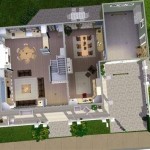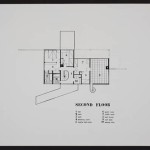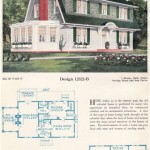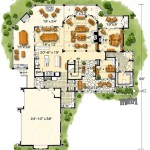2D House Plans with Dimensions: A Comprehensive Guide
Understanding architectural drawings is crucial for anyone embarking on a home building or renovation project. A fundamental component of these drawings is the 2D house plan, providing a bird's-eye view of the layout and dimensions of a house. These plans serve as the blueprint for construction, ensuring accurate execution of the design and facilitating clear communication between architects, builders, and homeowners.
2D house plans delineate the arrangement of rooms, walls, doors, windows, and other structural elements within a specific floor level. Dimensions are essential components, indicating the precise length, width, and height of each element and the spaces between them. These dimensions are typically expressed in feet and inches or meters and centimeters, depending on the regional standard. Accurate dimensions are critical for determining material quantities, estimating costs, and ensuring the final construction adheres to the design specifications.
Different types of 2D house plans cater to specific needs within the construction process. Floor plans are the most common type, illustrating the layout of each floor level, including interior walls, room sizes, and the placement of fixtures like sinks, toilets, and appliances. Foundation plans depict the layout of the foundation walls, footings, and other structural elements below ground level. Roof plans illustrate the shape and dimensions of the roof, including its slope, overhangs, and the positioning of chimneys and vents. Elevation drawings, while technically 2D representations, offer a side view of the house, depicting exterior wall heights, window and door placements, and rooflines.
The use of Computer-Aided Design (CAD) software has revolutionized the creation and manipulation of 2D house plans. CAD software enables architects and draftspersons to produce highly accurate and detailed drawings, facilitating easy modification and revision. These programs often include libraries of standard architectural symbols and components, streamlining the design process and ensuring consistency in representation. Furthermore, CAD software allows for the easy sharing of digital files, improving communication and collaboration among stakeholders.
While CAD software has become the industry standard, some architects and designers may still utilize hand-drafting techniques for preliminary sketches or specific design elements. However, the level of precision and the ease of modification offered by CAD generally make it the preferred method for producing final construction drawings.
Reading and interpreting 2D house plans requires understanding the various symbols and conventions used to represent architectural elements. Lines of varying thickness and styles represent different types of walls, doors, and windows. Dimensions are typically indicated with dimension lines, extension lines, and arrowheads, clearly marking the length or width of a specific element. Text labels and annotations further clarify the function and specifications of various components.
The importance of accurate dimensions in 2D house plans cannot be overstated. Inaccurate dimensions can lead to construction errors, requiring costly rework and potentially compromising the structural integrity of the building. Discrepancies in dimensions can also cause issues with the installation of fixtures and appliances, leading to further delays and expenses.
When working with 2D house plans, it is crucial to verify that the drawings are to scale. The scale indicates the ratio between the dimensions on the drawing and the actual dimensions of the building. For example, a common scale for residential house plans is 1/4 inch equals 1 foot. This means that every 1/4 inch on the drawing represents 1 foot in the actual building.
Obtaining 2D house plans with accurate dimensions is essential for a successful construction or renovation project. These plans provide the roadmap for the entire process, guiding the work of builders, contractors, and other professionals. They facilitate accurate cost estimation, material procurement, and construction scheduling, ensuring the project stays on track and within budget.
When reviewing 2D house plans, homeowners should pay close attention to the layout, room sizes, and the placement of doors, windows, and other features. They should also verify that the dimensions are accurate and that the plans meet their specific needs and preferences. Consulting with an architect or building professional can provide valuable insights and ensure the plans are suitable for the intended purpose.
Different jurisdictions have specific building codes and regulations that must be adhered to during the design and construction process. 2D house plans must comply with these regulations, addressing requirements related to structural integrity, fire safety, accessibility, and energy efficiency. Building permits are typically required before construction can commence, and these permits are often contingent upon the submission of compliant 2D house plans.
Technological advancements continue to shape the field of architectural design. Building Information Modeling (BIM) is gaining traction as a more comprehensive approach to building design and construction. BIM goes beyond 2D representations, creating 3D models that incorporate detailed information about every building component. While BIM offers significant advantages, 2D house plans remain a vital component of the design and construction process, providing a clear and concise representation of the building's layout and dimensions.

2d Floor Plans

Beautiful 2d Floor Plan Ideas Engineering Discoveries Home Map Design House Building Plans Designs

2d Floor Plan Archives Page 2 Of 6 Dk Home Designx

2d Floor Plan Design At Rs 5 Square Feet In Raigad Id 22492210473

12 Examples Of Floor Plans With Dimensions

2d Floor Plans Home Plan Drawing House

2d Floor Plans

Free Modern Affordable 2d House Plans

2d Floor Plans Welcome To Pandit Build Well

2d Floor Plan Archives Page 2 Of 6 Dk Home Designx
Related Posts








